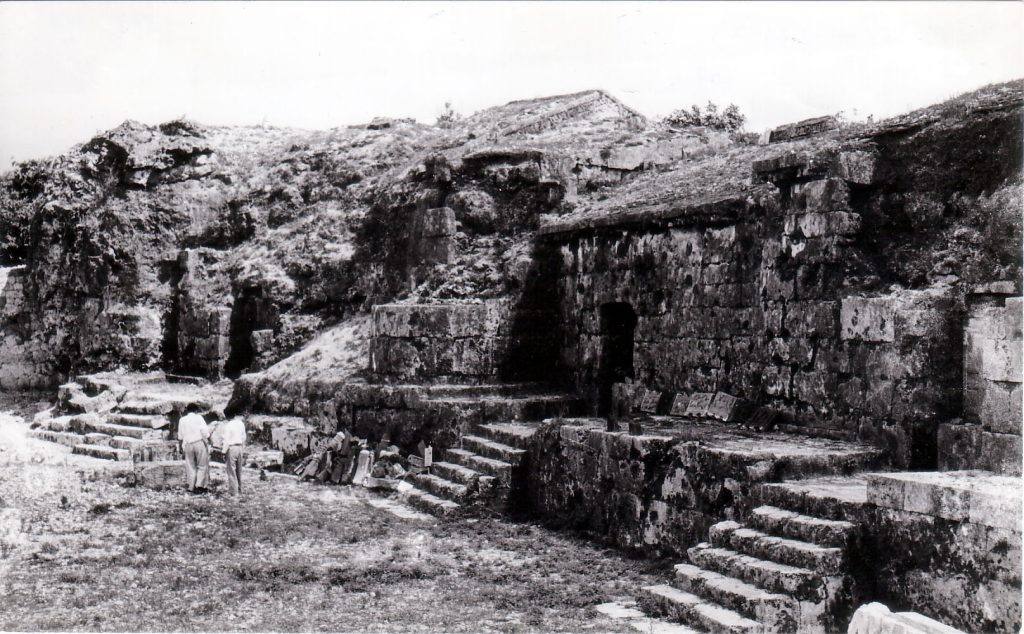
Okinawa’s Grave Itinerancy (1) Wind Burial
Speaking of graves in Okinawa, “turtle shell” graves, shaped like a turtle’s shell, are famous.
Tracing the history of graves in Okinawa, it is surprisingly recent in the long history of Ryukyu, as it was only after the 16th century that people began to build graves with tortoiseshell or duct tombs.
Before the construction of tortoise-shell and gable tombs, it is thought that so-called “wind burial,” in which the body was placed in a cave or forest for burial, was common.
Therefore, the custom of cremation has a short history, suggesting that it had its own customs that differed from those of the mainland.
It is said that wind burial was practiced on Kutaka Island, which was considered a sacred place during the Ryukyu Kingdom period, until the 1960s.
History of Okinawa’s Graves (2) Gable tombs
The custom of wind burial eventually led to masonry around them, and artificial alterations were made to enlarge the digging and create a roof. This is how house-shaped graves, called “hafu graves,” came to be built.
The famous “Tamaurung (Tamau-do),” a royal tomb in Shuri, is a representative example of this broken tomb. The “Kochi Belly Gate Middle Tomb” in Itoman City is also famous.
While these older graves are large tombs set against rock walls, most private graves today are small, house-shaped, gable tombs built on level ground, also known as “yagwabaka.
History of Graves in Okinawa (3) Turtle-shell Tomb
Turtle shell tombs, a popular design for graves in Okinawa, are thought to have appeared after the 1600s.
Early turtle-shell tombs in Okinawa include the famous Ie Goten tomb (Ie Udonbaka) and the tomb of Gosamaru.
The tortoise shell tomb is a surprisingly new form in the history of tombs. On the other hand, its unique grave design is said to have been influenced by Chinese ideology.
In China, there is a “return to motherhood” philosophy that people return to their mother’s womb after completing their lives.
The shape of the tortoise shell tomb symbolizes a woman’s womb and is thought to reflect the Chinese-derived belief that a person returns to the womb by placing the bones within it.
Thus, it can be seen that the turtle tombs were strongly influenced by the ideological and cultural influences of old China.
However, building tombs during this period was only allowed for royalty and samurai families, and the general public did not have access to tombs during this period.
Since it was forbidden for common people to build tombs during the Ryukyu Kingdom period, it was not until after the Meiji period (1868-1912) that it became widely popular among the general public.
